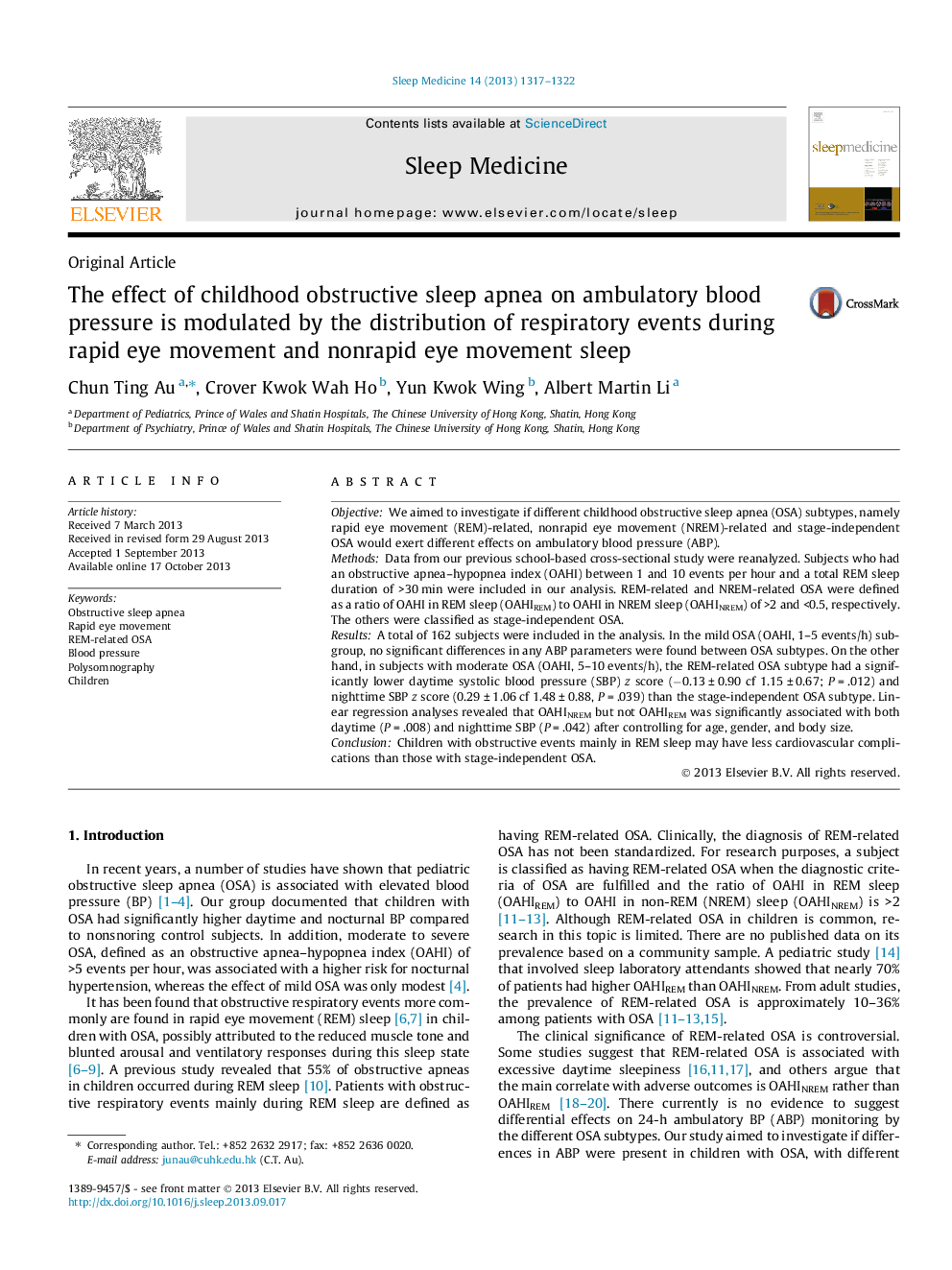| Article ID | Journal | Published Year | Pages | File Type |
|---|---|---|---|---|
| 6061028 | Sleep Medicine | 2013 | 6 Pages |
ObjectiveWe aimed to investigate if different childhood obstructive sleep apnea (OSA) subtypes, namely rapid eye movement (REM)-related, nonrapid eye movement (NREM)-related and stage-independent OSA would exert different effects on ambulatory blood pressure (ABP).MethodsData from our previous school-based cross-sectional study were reanalyzed. Subjects who had an obstructive apnea-hypopnea index (OAHI) between 1 and 10 events per hour and a total REM sleep duration of >30 min were included in our analysis. REM-related and NREM-related OSA were defined as a ratio of OAHI in REM sleep (OAHIREM) to OAHI in NREM sleep (OAHINREM) of >2 and <0.5, respectively. The others were classified as stage-independent OSA.ResultsA total of 162 subjects were included in the analysis. In the mild OSA (OAHI, 1-5 events/h) subgroup, no significant differences in any ABP parameters were found between OSA subtypes. On the other hand, in subjects with moderate OSA (OAHI, 5-10 events/h), the REM-related OSA subtype had a significantly lower daytime systolic blood pressure (SBP) z score (â0.13 ± 0.90 cf 1.15 ± 0.67; P = .012) and nighttime SBP z score (0.29 ± 1.06 cf 1.48 ± 0.88, P = .039) than the stage-independent OSA subtype. Linear regression analyses revealed that OAHINREM but not OAHIREM was significantly associated with both daytime (P = .008) and nighttime SBP (P = .042) after controlling for age, gender, and body size.ConclusionChildren with obstructive events mainly in REM sleep may have less cardiovascular complications than those with stage-independent OSA.
